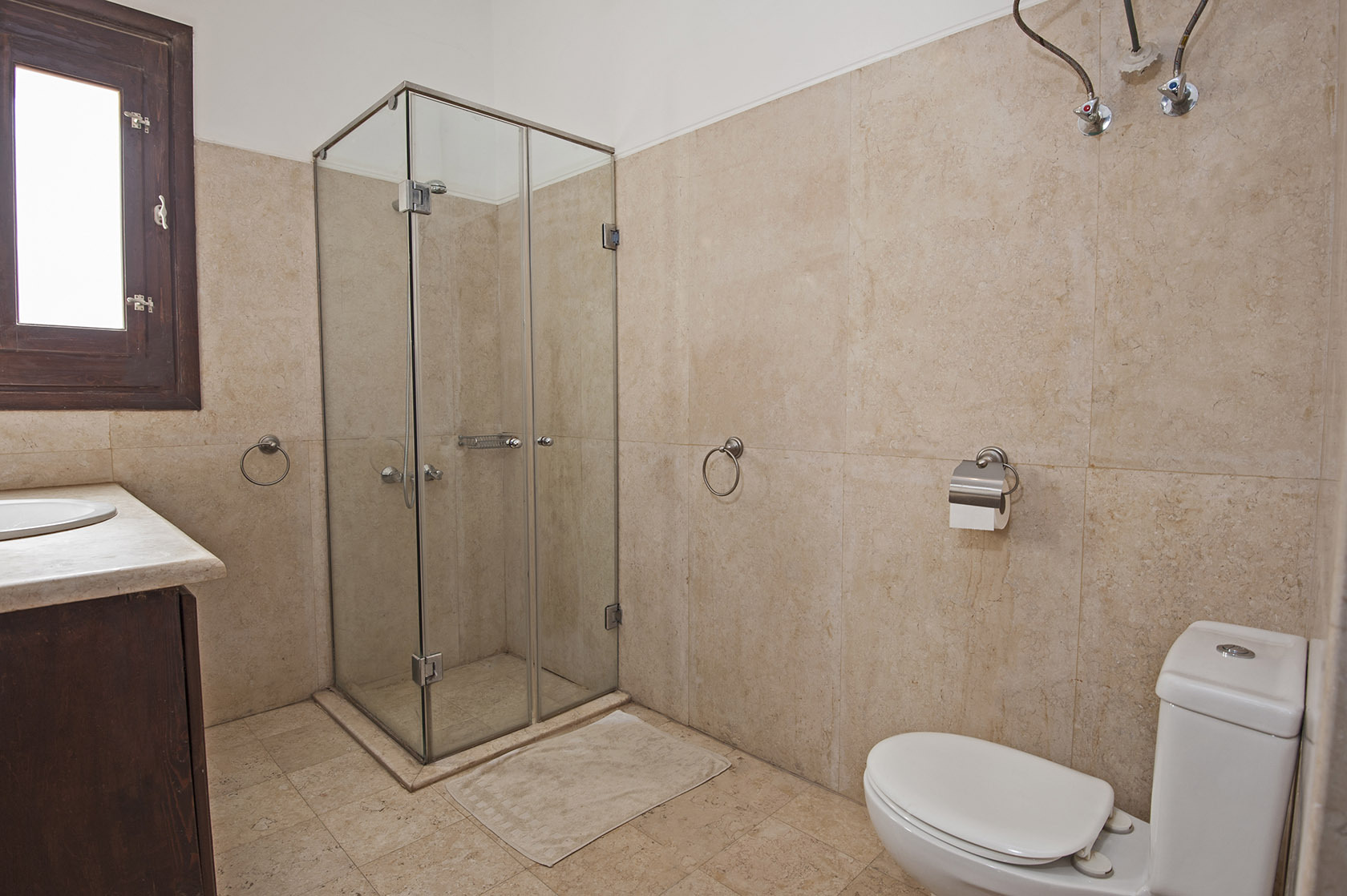
What is a linear drain? It's a method of gravitationally draining water from a room and is one of the solutions gaining increasing popularity among those designing a modern bathroom – water flows over the surface of a long rectangle into the siphon, and then enters the sewer, thus eliminating the need for a traditional shower tray. Theoretically, a linear drain is suitable for both wall and floor installation – in some cases, however, one solution or the other might appear aesthetically displeasing and can complicate cleanliness in the shower. So, what will work better in your bathroom?
In the wall or the floor
A linear drain is a solution that is best planned out at the design stage of the bathroom – this approach allows for the adjustment of parameters, including the height of the floor under which the drain frame and siphon can be easily accommodated. The most important aspect when choosing a linear drain and installing it is the amount of space available. Most shower siphons are vertical siphons, with horizontal, maximally reduced siphons being introduced only recently, allowing for lower installations. Linear drains are installed differently due to their construction, unlike point drains, where choice is not possible.
Linear drains offer more possibilities and look modern. Installing a drain in the wall is an unusual solution, therefore it fits well in modern bathrooms, while a linear drain installed in the floor will look good both in a contemporary and traditional bathroom. When choosing a drain, it is also essential to consider the possibility of its repair. Drains sometimes get clogged, and it is important to have proper access to them. If a quick fix is not possible, you might have to consider its complete disassembly to remove the fault, which entails additional costs that can be avoided in many cases.
Linear drain as an indicator of modernity
The linear drain is increasingly chosen by those renovating their bathroom. Partly, decisions are driven by their aesthetic qualities, but also by their practicality. Additionally, manufacturers offer a wide selection of multi-coloured drains that influence the bathroom's atmosphere. When choosing a drain, it's good to be guided by the style you want to achieve in the interior.
Modernity in the world of bathrooms is dictated more by individual preferences. However, they always share a common feature – contemporary technical solutions facilitate daily functioning in the bathroom and also serve as decoration. Nowadays, manufacturers not only produce devices that are functional but also pleasing to the eye. A modern bathroom is spacious, well-kept, and easy to clean. To achieve this, it's enough to choose appropriate accessories and devices from the start that align with this principle.
Linear drain finishes
The cheapest solutions are cast iron grates that cover the entire drain and also collect possible deposits. But the most intriguing are designer solutions, such as thin slits where water quickly disappears. These types of drains, which have no protection, are backlit and additionally encased in stainless steel, further emphasizing a modern approach to bathroom design.
Interesting solutions also include linear grates. The name suggests a simple stylistic solution, but that is misleading. Linear grates can take on interesting designs, sometimes very intricate and artistic. With such decorative grates, it's crucial to carefully consider the installation concept to avoid ruining the overall bathroom project. Thus, the bathroom can be executed in a simple, classic style, and accessories such as decorative drains, siphons, or other accessories can give the room a different character.
The finishing touch is laying matching tiles, which in this case serve both decorative and practical purposes. For lining a shower equipped with a linear drain, it is worth choosing tiles of Class III or IV abrasion resistance – such products are non-porous, therefore they do not absorb water and have anti-slip properties. The choice of grout should not be left to chance either – a suitable product for this type of solution is epoxy grout, which is more flexible, harder, and more resistant to damage than cement grout.
Some tips for proper installation
You've already chosen the right set and are wondering how to properly install the product so it functions without issue for a long time? Here are some tips to keep in mind during the installation of a linear drain:
- The drain must be installed at the correct angle to properly divert water to the sewer – the gradient of the drainage pipes should be about 2.5%.
- After installation, it is worth conducting a leak test to ensure no leakage occurs.
- One essential step is to perform waterproofing on all walls that will come into contact with water – this involves securing the floor and walls against water penetration using liquid foil.


















